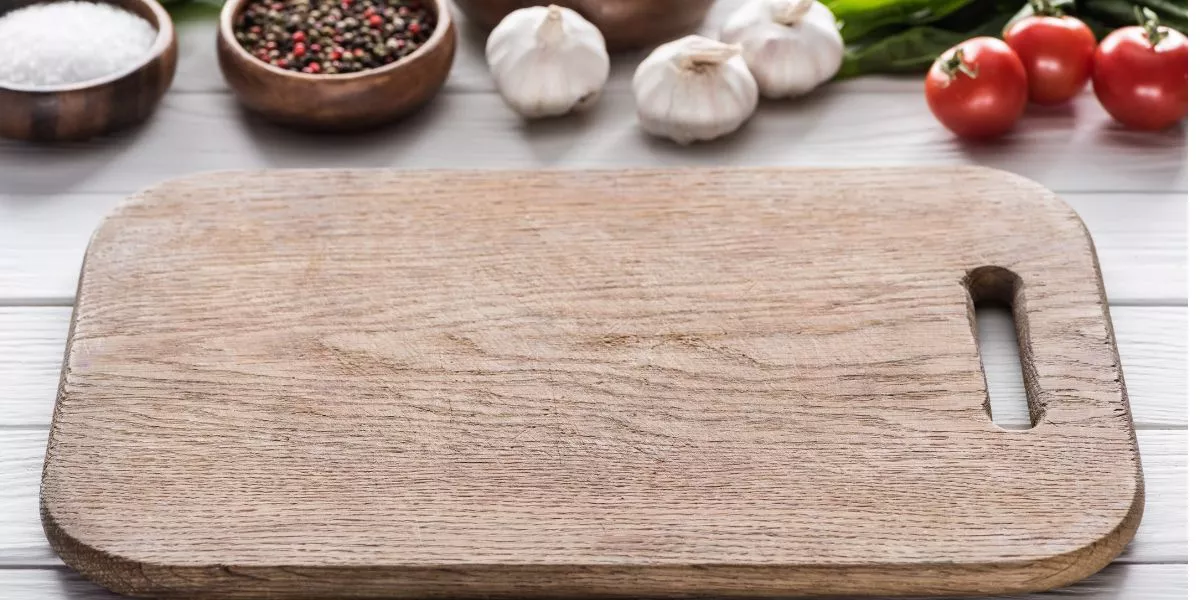
When it comes to choosing the right cutting board, you might find yourself overwhelmed by the options available. The right cutting board can make a significant difference in your cooking routine, but how do you know which one is best for you? By considering various factors like material, size, and usage, you can ensure that your cutting board meets your needs effectively. So, before you make your decision, take a moment to ponder how these elements align with your culinary practices and preferences – it might just lead you to the perfect cutting board for your kitchen endeavors.
Factors to Consider When Choosing
When selecting a cutting board, consider your cooking habits and the types of foods you frequently prepare. If you often prepare meats, especially raw meats, opt for a cutting board that's designated solely for this purpose to prevent cross-contamination. For those who frequently chop vegetables and fruits, a separate cutting board for these items can help maintain their freshness and prevent them from absorbing meat juices.
Think about the size of cutting board that suits your needs. Larger cutting boards provide ample space for cutting various ingredients at once, while smaller ones are more convenient for quick tasks. Consider the material of the cutting board as well. Wooden cutting boards are gentle on knives and are suitable for fruits and vegetables, while plastic cutting boards are easier to clean and can be used for meats.
Ultimately, the right cutting board for you'll depend on your specific cooking routines and preferences.
Different Types of Cutting Boards
To explore the variety of cutting boards available, consider the different materials and features that cater to various cooking needs and preferences.
Wood cutting boards are classic and gentle on knives, reducing wear and tear. They also possess natural antimicrobial properties.
Bamboo cutting boards are eco-friendly, durable, and less porous than wood, making them less prone to absorbing odors and liquids.
Plastic cutting boards are affordable, lightweight, and dishwasher safe, ideal for easy cleaning. They come in various colors to prevent cross-contamination when working with different food types.
Glass cutting boards are hygienic, as they can be sanitized effectively in the dishwasher, but they can dull knives quickly.
Composite cutting boards combine different materials for versatility; for example, a wood fiber composite board is gentle on knives and dishwasher safe.
Marble cutting boards are stylish and naturally cool, ideal for working with pastry and chocolate.
Choose a cutting board that suits your cooking habits and maintenance preferences to enhance your culinary experience.
Maintenance and Care Tips
For proper maintenance and care of your cutting board, regularly clean and sanitize it after each use to prolong its lifespan and ensure food safety. To clean your cutting board, use hot, soapy water and a scrub brush to remove any food particles. Sanitize it by applying a solution of 1 tablespoon of bleach per gallon of water, letting it sit for a few minutes, then rinsing thoroughly. Air dry your cutting board upright to prevent moisture buildup. Avoid soaking wooden boards or putting them in the dishwasher, as this can cause warping or cracking.
Regularly oil your wooden cutting board with food-safe mineral oil to prevent it from drying out and cracking. Apply the oil in the direction of the wood grain and let it sit overnight. For plastic cutting boards, inspect them regularly for deep cuts or grooves where bacteria can hide, and consider replacing them if they become too damaged.
Matching Your Cutting Board to Your Cooking Style
Consider your cooking style and habits when choosing the right cutting board to enhance your culinary experience. If you love preparing meats, a sturdy wooden cutting board is ideal as it's gentle on your knives and won't dull them quickly. For those who enjoy a lot of fruits and vegetables in their dishes, a plastic cutting board is a great choice as it can be easily cleaned and is less likely to harbor bacteria. If you're an avid home baker, a marble cutting board provides a cool surface for working with dough and chocolate.
If you often find yourself chopping ingredients in large quantities, a spacious cutting board will give you the room you need to work efficiently. On the other hand, if you have limited storage space or prefer a portable option, a flexible cutting mat can be rolled up and stowed away easily. By aligning your cutting board with your cooking style, you can streamline your prep work and elevate your cooking experience.




